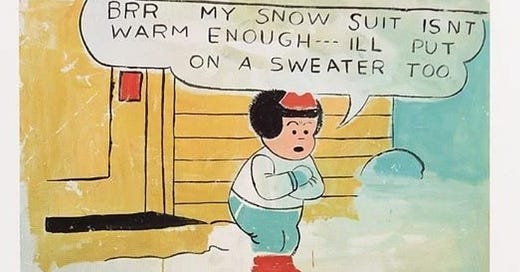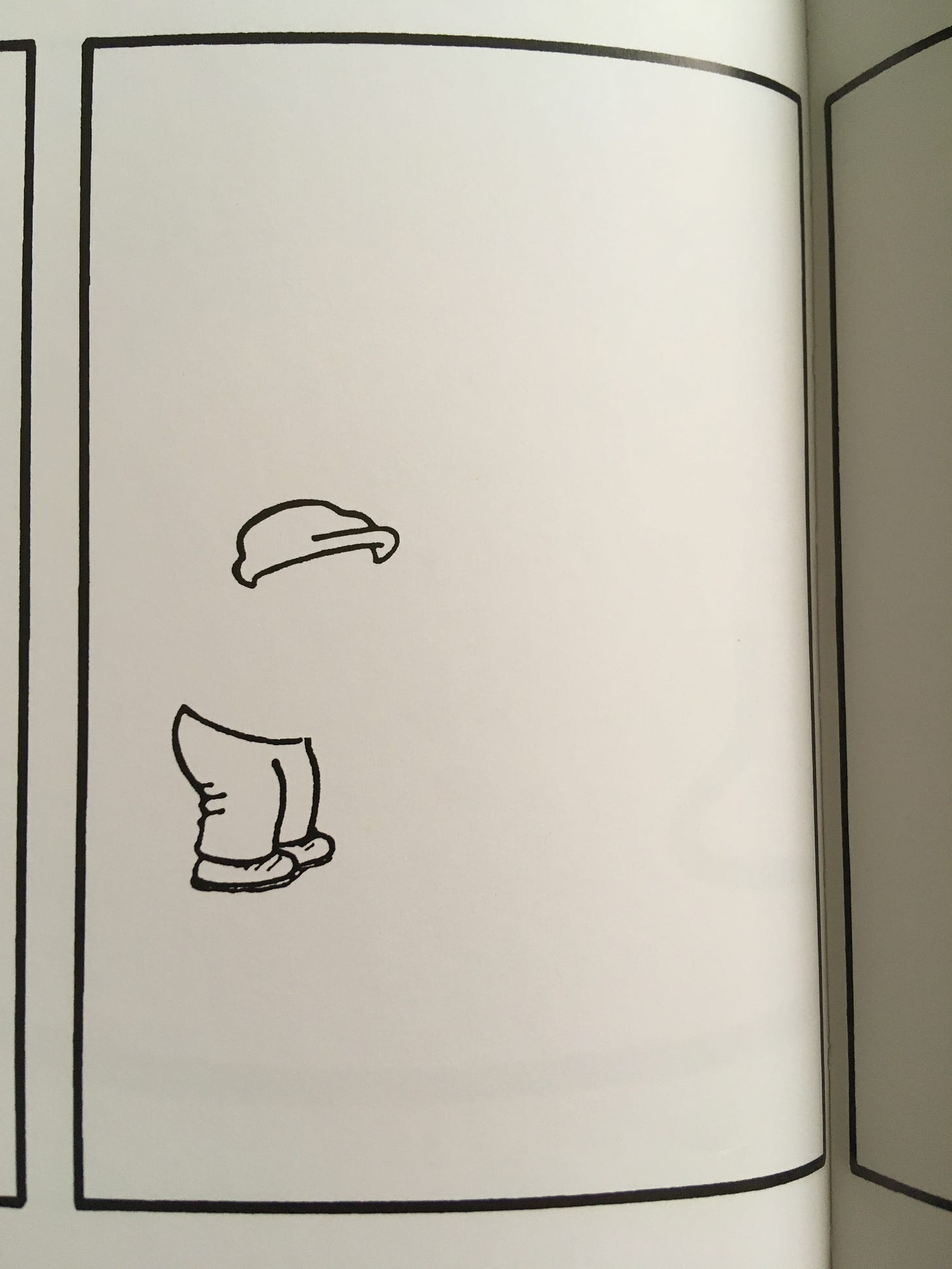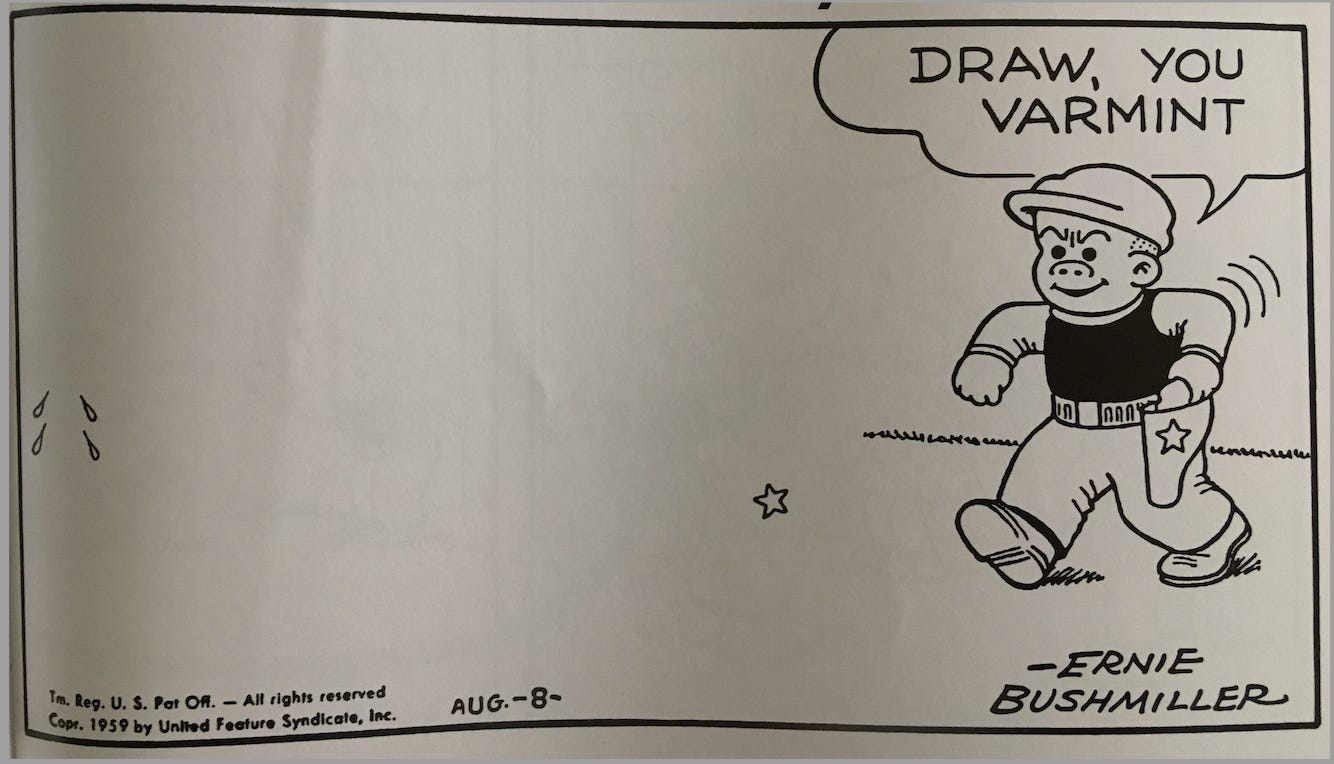Nancy re-imagined as a De Kooning art piece, a building in the New York City skyline, Andre Breton at eighteen months, and even as an underground comix character, performing a lewd act—the artist Joe Brainard found inspiration in Nancy, transforming her in playful collages, paintings and drawings. Andy Warhol painted a Nancy panel; John Lotshaw started resampling panels in a spinoff called “Random Acts of Nancy” in 2014. What is it about this cartoon character that continues to inspire, to invite her audience into a space of play and imagination?
But Nancy has always been captivating. Ernie Bushmiller (1905-1982) created the celebrated Nancy character in 1933, when she joined her cousin Frtizi Ritz in the eponymous strip. “Fritzi” didn’t make it as a strip (and became a supporting character to Nancy), but “Nancy” did: the 8 year old’s humor, sass, intelligence and never-mussed helmet of solid black hair won fans in the funny pages until Bushmiller’s death in 1982. Even then, Nancy would go on, drawn at the hands of different creators.
Part of Nancy’s appeal, apart from her quippy observations, is the clean, controlled style in which she is drawn—the perfect vehicle to deliver laughs that rely on visual cues and punchlines. Check out the strip below: Bushmiller’s deliberate use of background—note the rain seen out the window—speech, emanata (sweat droplets and surprise lines both show up here), and, of course, the ball-as-gag itself, all do important work in just four panels (also of different sizes—Bushmiller is a true craftsperson!).
(From https://www.gocomics.com/nancy-classics/2015/02/28)
Of course, this Bushmiller/Nancy phenomenon has been noted by many people, most notably for us in How to Read Nancy: The Elements of Comics in Three Easy Panels by Paul Karasik and Mark Newgarden. In our class on comics, we used Karasik and Newgarden’s intimate breakdown of one Nancy strip to play a game with our students, our riff off “Five Card Nancy.” Here is the original strip we play with (and discussed at length in the book):
Using Scott McCloud’s Dadaist Five Card Nancy as our base, we created the following version:
1) Choose some panels to photocopy from the plentiful options in the book. While the strip is always the one seen above, Karasik and Newgarden strip elements to illustrate various points of craft in this simple gag. See this sample of the Table of Contents to get an idea of the range—
2) Make multiple photocopies of a group of 5-7 panels. For example, here are some of the deconstructed ones that you could choose, which make up the whole strip.
2) Pass out the panels. Each student will have three different panels, with different elements in the panel.
3) Have students fill in the first panel however they want, using the existing Bushmiller scaffolding.
4) Then they pass the panel to their neighbor, who takes a fresh panel from their stack and draws the next scene.
5) The two drawn panels are then passed in reading order to the neighbor, who looks only at the second panel and uses this to complete the third panel from their stack.
6) Now the students have a small, three-panel Nancy version of the exquisite corpse game played by the surrealists!
This exercise, in addition to creating some hilarity and generating ideas through its spontaneity and surprise, can also be used to spark discussion about three-act structure, the art of the gag, or letting the story/characters/events/mark-making create their own plot.
Other versions could include:
-mail a few panels back and forth with a friend
-leave a few in a library book
-gallery style—leave some up and people finish the art to create a party deck
Have you been playing some version of Five Card Nancy? Let us know in the comments!
Links:
Here’s Scott McCloud’s version of Five Card Nancy.
The Nancy Book, by Joe Brainard, published in 2008 by Siglio Press, is worth checking out.
There’s a new Nancy in town! This time, she’s got a phone and is addicted to it as the rest of us…
The Sequential Artists Workshop (SAW) has a real deck of Nancy cards for the original Five Card game.
Speaking of SAW, did you hear they are bringing back #fridaynightcomics? The best place to look for workshop announcements might be their Facebook page.










